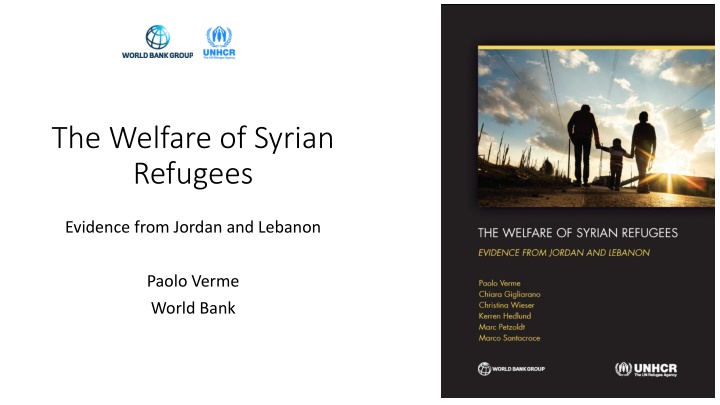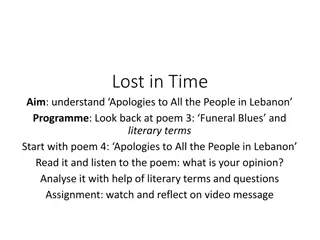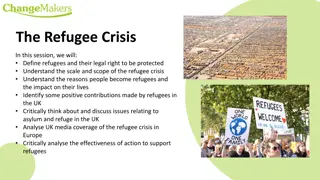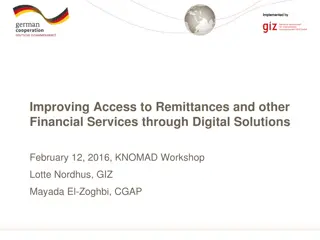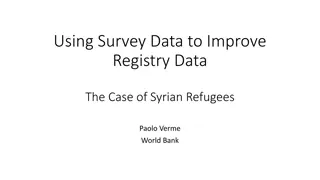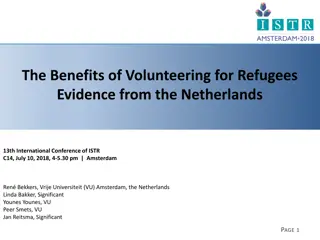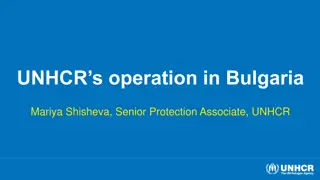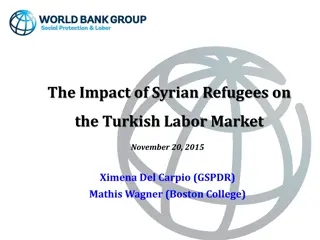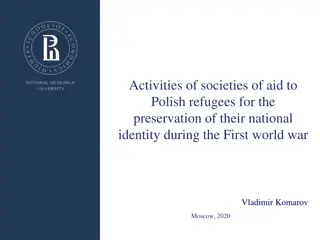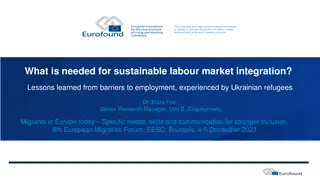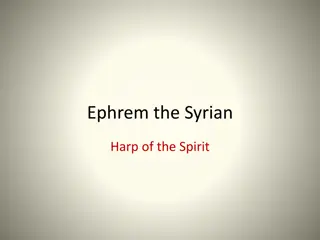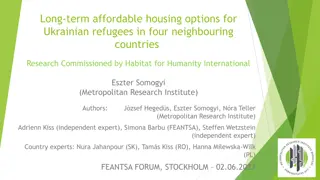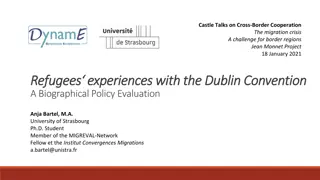The Welfare of Syrian Refugees: Evidence from Jordan and Lebanon
This report by Paolo Verme from the World Bank delves into the welfare status of Syrian refugees in Jordan and Lebanon, offering insights on poverty, vulnerability, and the effectiveness of assistance programs. Through data sets and analytical expertise, the study explores the overlap of poverty and vulnerability, refugee profiles, predictors of welfare, and comparative analyses across countries. Income and expenditure patterns, along with transfer data, shed light on the challenges and potential policies to enhance refugees' well-being.
Download Presentation

Please find below an Image/Link to download the presentation.
The content on the website is provided AS IS for your information and personal use only. It may not be sold, licensed, or shared on other websites without obtaining consent from the author.If you encounter any issues during the download, it is possible that the publisher has removed the file from their server.
You are allowed to download the files provided on this website for personal or commercial use, subject to the condition that they are used lawfully. All files are the property of their respective owners.
The content on the website is provided AS IS for your information and personal use only. It may not be sold, licensed, or shared on other websites without obtaining consent from the author.
E N D
Presentation Transcript
The Welfare of Syrian Refugees Evidence from Jordan and Lebanon Paolo Verme World Bank
Background Half of Syrian population displaced (6.5 m IDPs, 4.4 m. refugees, 1.5 m. additional migrants) A WB-UNHCR partnership: WB analytical expertise on poverty and welfare UNHCR expertise and data on refugees Data sharing agreement Pilot study in Jordan, March 2014 Two countries in 2014: Jordan (0.61 m. refugees) and Lebanon (1.1 m. refugees) Six Data sets: UNHCR registry (proGres) UNHCR home visits UNHCR and WFP household surveys Focus on refugees living outside camps (about 90 percent of all refugees)
Ten Questions 6) Do poverty and vulnerability statuses overlap? 1) Who are the refugees? 2) How different are refugees from regular populations? 7) How effective are refugee assistance programs? 8) What is the potential for alternative policies? 3) How poor are refugees? 4) What are the main predictors of refugees welfare and poverty? 9) How does welfare compare across countries and data sets? 5) How vulnerable are refugees from a monetary and non-monetary perspective? 10) How transferable are the findings between countries and data sets?
Table of Contents Overview Concepts and definitions 1. A profile of refugees 2. Welfare and Poverty 3. Vulnerability 4. Policies 5. A comparative analysis across countries and data sets Annexes (Welfare and poverty on different data sets)
Income and Expenditure per Capita Variable Income per capita Income per capita with no zeroes Expenditure per capita Expenditure per capita net of UNHCR cash assistance Obs 47468 25288 47468 Mean 34.75 65.23 77.80 Std. Dev. 64.06 75.60 74.74 Min 0 0.5 1 Max 3000 3000 1675 47468 70.45 76.29 0 1675
Distributions of Income and expenditure .8 .6 .4 .2 0 0 2 4 x 6 8 Exp/cap with UNHCR cash Exp/cap without UNHCR cash Inc/cap with UNHCR cash
Transfers 3.8 pecent of refugees declared to receive some form of household transfers Not specified whether transfers are remittances Transfers amounted to 214 JD/month/family on average or 21 JD/month/person => Few refugees receive transfers but the amounts are significant
Conclusion Income is unreliable, better to use expenditure Transfers seem to accrue to few refugee households and it is unclear how much of these transfers are remittances Collecting information on transfers and remittances from the recipient side is difficult in a refugee context One should explore alternative options to track remittances (money transfers agencies)
